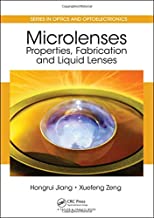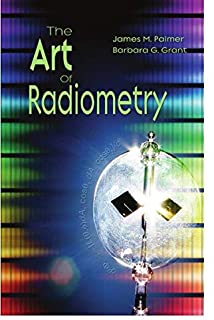Microlenses : Properties, Fabrication and Liquid Lenses
Original price was: ₹15,078.00.₹12,062.40Current price is: ₹12,062.40.
ISBN: 9781439836699
Author/Editor: Hongrui Jiang
Publisher: CRC Press
Year: 2013
Available on backorder
Description
Due to the development of microscale fabrication methods, microlenses are being used more and more in many unique applications, such as artificial implementations of compound eyes, optical communications, and labs-on-chips. Liquid microlenses, in particular, represent an important and growing research area yet there are no books devoted to this topic that summarize the research to date. Rectifying this deficiency, Microlenses: Properties, Fabrication and Liquid Lenses examines the recent progress in the emerging field of liquid-based microlenses.
After describing how certain problems in optics can be solved by liquid microlenses, the book introduces the physics and fabrication methods involved in microlenses. It also details the facility and equipment requirements for general fabrication methods. The authors then present examples of various microlenses with non-tunable and tunable focal lengths based on different mechanisms, including:
Non-tunable microlenses: Ge/SiO2 core/shell nanolenses, glass lenses made by isotropic etching, self-assembled lenses and lens arrays, lenses fabricated by direct photo-induced polymerization, lenses formed by thermally reflowing photoresist, lenses formed from inkjet printing, arrays fabricated through molding processes, and injection-molded plastic lenses
Electrically tuned microlenses: liquid crystal-based lenses and liquid lenses driven by electrostatic forces, dielectrophoretic forces, electrowetting, and electrochemical reactions
Mechanically tunable microlenses: thin-membrane lenses with varying apertures, pressures, and surface shapes; swellable hydrogel lenses; liquid?iquid interface lenses actuated by environmentally stimuli-responsive hydrogels; and oscillating lens arrays driven by sound waves
Horizontal microlenses: two-dimensional polymer lenses, tunable and movable liquid droplets as lenses, hydrodynamically tuned cylindrical lenses, liquid core and liquid cladding lenses, air?iquid interface lenses, and tunable liquid gradient refractive index lenses
The book concludes by summarizing the importance of microlenses, shedding light on future microlens work, and exploring related challenges, such as the packaging of systems, effects of gravity, evaporation of liquids, aberrations, and integration with other optical components.
Additional information
| Weight | 0.476 kg |
|---|
Product Properties
| Year of Publication | 2013 |
|---|---|
| Table of Contents | Introduction to Liquid Microlenses History of Microlenses Categories of Microlenses Physics of Microlenses Microlens Arrays Ubiquitous Problems in Optics Applications of Liquid Microlenses Basic Physics of Liquid Microlenses Light Optical Lenses Surface Tension Fabrication Methods Introduction to Microfabrication Methods Facilities and Equipment Substrate Materials Materials Basic Fabrication Steps Other Microfabrication Techniques Examples of Microfabrication Processes Solid Microlenses Introduction Germanium and Silicon Oxide Nanolenses Quartz Glass Microlenses Etched by Reactive Ion Etching Self-Assembled Supermolecular Nanoscale Spherical Microlenses Microlens Arrays Fabricated from Self-Assembled Organic Polymers Self Assembly of Microlens Arrays Using Global Dielectrophoretic Energy Wells Microlens Arrays Fabricated from All-Liquid Techniques Microlenses Produced by Direct Photo-Induced Cross Linking Polymerization Microlenses Formed by Thermally Reflowing Photoresists Microlens Arrays Fabricated with Polymer Jet Printing Technology Microlens Arrays Fabricated through Molding Microlens Arrays Fabricated by Hot Intrusion Electrically Driven Tunable Microlenses Introduction Liquid Crystal Microlenses Liquid Microlenses Encapsulated with Polymer Thin Film Driven by Electrostatic Forces Tunable Focus Liquid Microlenses Using Dielectrophoretic Effect Tunable Focus Liquid Microlenses Using Electrowetting Electrochemically Activated Adaptive Liquid Microlenses Mechanically Driven Tunable Microlenses Introduction Thin Glass Membranes Polymer Membranes Colloidal Hydrogel Dynamically Tunable Microlenses Liquid Microlenses Tuned by Environmental Stimuli-Responsive Hydrogels Oscillating Microlens Arrays Driven by Sound Waves Horizontal Microlenses Integrated in Microfluidics Introduction Two-Dimensional (2D) Microlenses Optofluidic Microlenses Tunable Liquid Gradient Refractive Index Lens Looking into the Future Commercialization of Microlenses Future Work Index References appear at the end of each chapter. |
| Author | Hongrui Jiang |
| ISBN/ISSN | 9781439836699 |
| Binding | Hardback |
| Edition | 1 |
| Publisher | CRC Press |
You must be logged in to post a review.






Reviews
There are no reviews yet.